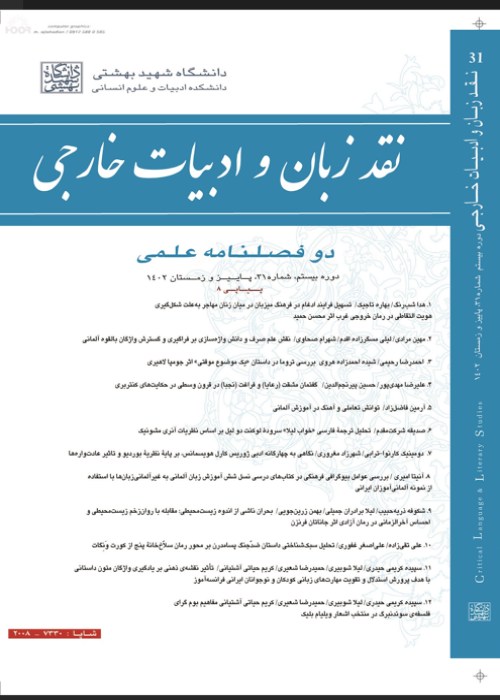Investigating the Translation and Singability of Songs in Persian Dubbed Animated Feature Films
Article Type:
Research/Original Article (دارای رتبه معتبر)
Abstract:
Introduction
The interconnectedness between music and translation has not been well-studied in the field of translation studies (Sarajeva, 2008). Music plays a pivotal role in musical animations. Some songs are inextricably related to the plot and leaving them untranslated damages the comprehension of the original product (Di Giovanni, 2008). The aim of this study is to examine the translation and singability of songs in Persian dubbed animated feature films.
Methodology
For this study, eleven musical animations were selected to examine the singability of the songs in Persian dubbed animations. A new model, which is a hybrid of two previous models on singability of songs by Low (2003, 2005, 2008) and Franzon (2008), proposed by Khoshligheh and Ameri (2016), consists of the pre-existing music, prosodic match, poetic match, semantic–reflexive match, sense, naturalness, lip-synchronization. This model was applied to the corpus of the study. The Persian and English lyrics were extracted and compared based on this model.
Results
Of the seventy-seven songs in the eleven musical animations dubbed into Persian, forty- six songs were dubbed, so the audience can hear the English songs; in other words, the original music and the English lyrics. According to the first method, forty-six songs were not translated. In some songs, completely new lyrics were written, sometimes the lyrics did not have any meaningful relation to the source lyrics, but they were easily read on the original music. In other songs, the lyrics were rewritten or translated to adapt to the original music. As Franzon (2008) pointed out, due to the complexity and difficulty of song translating various methods in the practical translation might combine.
Conclusion
The results suggest that, despite the difficulty of song translation, Glory Entertainment, the company dubbed the programs, has exhibited an increasing tendency toward dubbing songs in recent years. According to the model, it can be said that the dubbing group has moved on to preserve the original music. Importantly, the loyalty of the song translation should be assessed based on the contextual appropriations and purpose of the translation. Due to the complexity of song translation, especially the dubbing of the songs, there is a real need for a group of translators, linguists and musicians together.Keywords:
Language:
Persian
Published:
Critical Language & Literary Studies, Volume:16 Issue: 22, 2019
Pages:
271 to 295
magiran.com/p2008809
دانلود و مطالعه متن این مقاله با یکی از روشهای زیر امکان پذیر است:
اشتراک شخصی
با عضویت و پرداخت آنلاین حق اشتراک یکساله به مبلغ 1,390,000ريال میتوانید 70 عنوان مطلب دانلود کنید!
اشتراک سازمانی
به کتابخانه دانشگاه یا محل کار خود پیشنهاد کنید تا اشتراک سازمانی این پایگاه را برای دسترسی نامحدود همه کاربران به متن مطالب تهیه نمایند!
توجه!
- حق عضویت دریافتی صرف حمایت از نشریات عضو و نگهداری، تکمیل و توسعه مگیران میشود.
- پرداخت حق اشتراک و دانلود مقالات اجازه بازنشر آن در سایر رسانههای چاپی و دیجیتال را به کاربر نمیدهد.
In order to view content subscription is required
Personal subscription
Subscribe magiran.com for 70 € euros via PayPal and download 70 articles during a year.
Organization subscription
Please contact us to subscribe your university or library for unlimited access!



